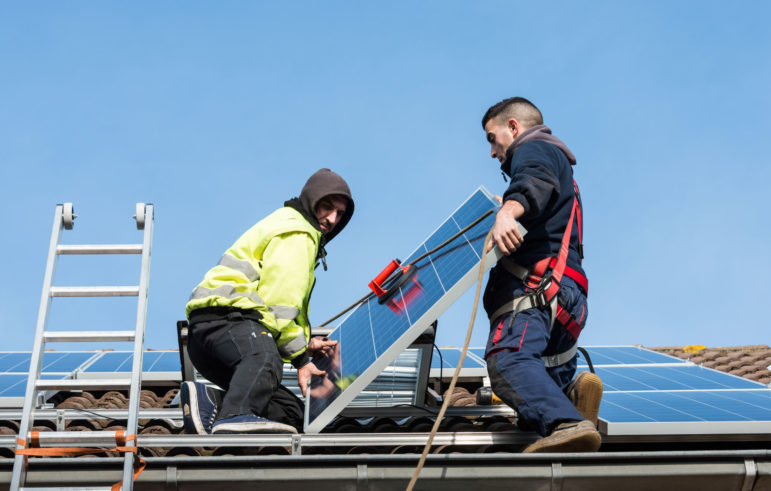
Last week, a stakeholder report containing findings and recommendations to promote diversity in Minnesota’s energy utility workforce was delivered to the State Legislature. This report follows months of work in collaboration with a large group (known as the Energy Utility Diversity Group, or “EUDG”) of interested individuals and stakeholders, including Fresh Energy, representing a broad range of interests, including utilities, labor unions, clean energy developers, multicultural groups, and more. The bill requiring the report was recognized by Governor Tim Walz at an honorary bill signing last fall.
Here are a few notable findings, details, and recommendations included in the report:
- The energy sector is changing and presenting new opportunities. The energy sector is evolving, which includes movement from large centralized power plants toward renewable and distributed energy resources. This shift requires Minnesota’s energy utilities to anticipate changes to the sector’s workforce and procurement needs, as well. Given these factors, along with Minnesota’s changing demographics, there is an opportunity to engage populations who have historically been under-represented, including women and people of color.
- The utility industry is growing slowly, but the existing workforce is in transition. The Center for Energy Workforce Development (CEWD) projects only a net increase of 53 jobs in Minnesota’s utility industry between 2016 and 2026. However, the utility industry is also in the process of replacing about half of its workers due to attrition and retirements.
- Minnesota’s overall workforce diversity helps us understand the employment landscape at utilities. Although it was difficult to identify precise utility data, the workgroup agreed that it is helpful to understand the context in which Minnesota utilities operate. For example, for Minnesota as a whole, statistical data from the Minnesota Department of Employment and Economic Development (DEED) classified 10.36% of the labor force as minority between 2006 and 2010, while only 6.5% of workers in management occupations and 6.75% of workers in construction and extraction occupations were minority workers. Women represented 43.01% of the labor force, but made up 34.56% of management occupations and only 2.98% of workers in construction and extraction occupations.
- The energy sector should increase existing efforts and add new resources. It is important to build upon existing efforts in engagement, including training programs and removing barriers in hiring practices. However, it is also critical to recognize that more resources will be needed, such as new partnerships between utilities and other entities, and additional funding to address barriers in other areas, such as education and transportation.
- It’s challenging work, but these discussions need to continue. The EUDG should continue its work to gather a diverse group of interested individuals and entities to discuss challenges and opportunities to increase the diversity of Minnesota’s energy workforce.
Fresh Energy appreciated the opportunity to participate in this process, and we look forward to continuing to work with EUDG members going forward. As a national clean energy leader, Minnesota has a significant opportunity to ensure that its shifting utility workforce better reflects our state’s growing diversity. Fresh Energy will continue to advocate for ensuring the benefits of a robust clean energy workforce reach all Minnesotans.
